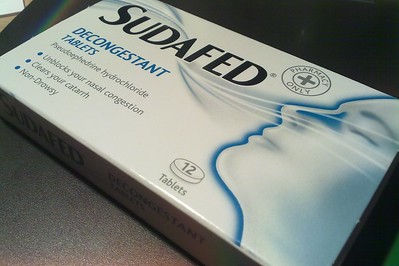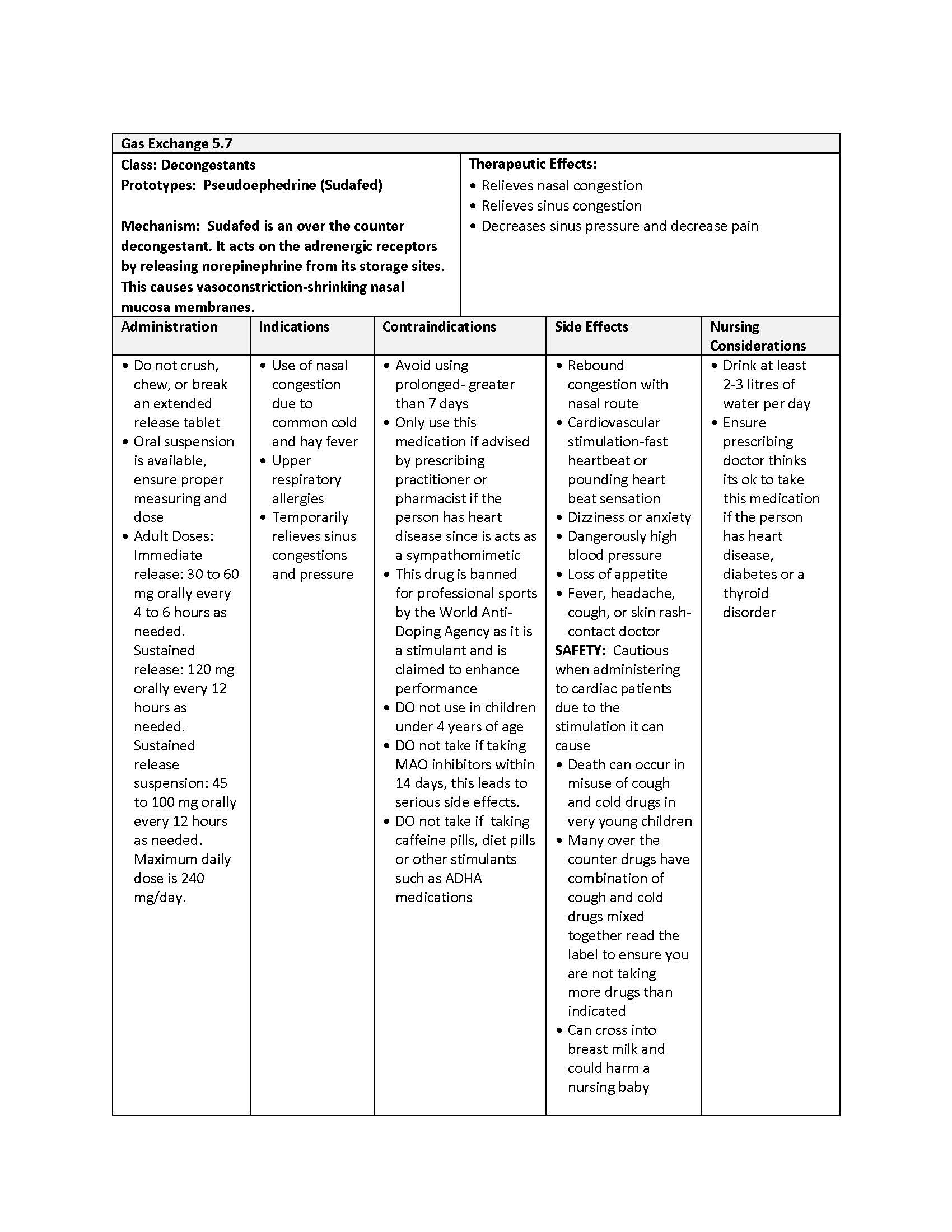Gas Exchange
5.7 Decongestants
Open Resources for Nursing (Open RN)
Decongestants
Decongestant medications have been available over the counter (drugs that you can buy at a pharmacy without a prescription) for years. Although they are readily available, considerations are necessary when taking any drug. In this chapter we will explore these drugs further.

Pseudoephedrine
Pseudoephedrine is an over-the-counter (OTC) decongestant (see Figure 5.7[1]). More details regarding pseudoephedrine are described in the “Autonomic Nervous System” chapter.
Mechanism of Action
Pseudoephedrine acts directly on the adrenergic receptors and acts indirectly by releasing norepinephrine from its storage sites. The drug produces vasoconstriction, which shrinks nasal mucosa membranes.
Indications for Use
Decongestants relieve nasal obstruction due to inflammation.
Nursing Considerations Across the Lifespan
This medication is not safe for children under the age of 4 years.
Adverse/Side Effects
Common adverse/side effects include hypertension, dysrhythmia, dizziness, headache, insomnia, and restlessness. Some clients may experience blurred vision, tinnitus, chest tightness, dry nose, and nasal congestion.
Decongestants are contraindicated in clients with severe hypertension, coronary artery disease (CAD), narrow-angle glaucoma, and some antidepressant use. Also, clients who have cardiac dysrhythmias, hyperthyroidism, DM (diabetes mellitus), prostatic hypertrophy, and glaucoma should use with caution.[2]
Client Teaching & Education
Client must take care to follow dosing recommendations. If dosing standards are surpassed, some clients may experience side effects such as increased nervousness, breathing difficulties, heart rate changes, and hallucinations.[3]
Now let’s take a closer look at the medication drug card on Pseudoephedrine. Medication cards are intended to assist students to learn key points about each medication class. Basic information related to a common generic medication in this class is outlined, including administration considerations, therapeutic effects, and side effects/adverse effects. Prototype/generic medication listed in the medication card is also hyperlinked to a free resource from Daily Med. Because information about medication is constantly changing, nurses should always consult evidence-based resources to review current recommendations before administering specific medication.in Table 5.7.[4], [5], [6].
Table 5.7 Pseudoephedrine Medication Card

Media Attributions
- Sudafed box
- Decongestant_Page_1
- "Project 366 #165: 130612 Helping Hand?" by Pete is licensed under public domain ↵
- Frandsen, G. & Pennington, S. (2018). Abrams’ clinical drug: Rationales for nursing practice (11th ed.). Wolters Kluwer. ↵
- uCentral from Unbound Medicine. https://www.unboundmedicine.com/ucentral ↵
- This work is a derivative of Pharmacology Notes: Nursing Implications for Clinical Practice by Gloria Velarde is licensed under CC BY-NC-SA 4.0. ↵
- Frandsen, G. & Pennington, S. (2018). Abrams’ clinical drug: Rationales for nursing practice (11th ed.). Wolters Kluwer. ↵
- This work is a derivative of Daily Med by U.S. National Library of Medicine in the public domain. ↵

